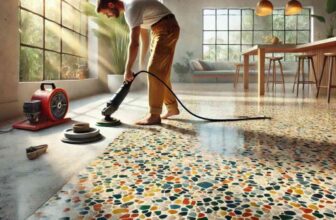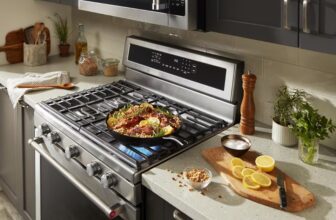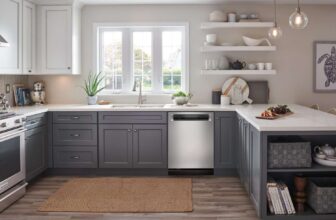The 11 Advantages of Vitrified Tiles for Flooring
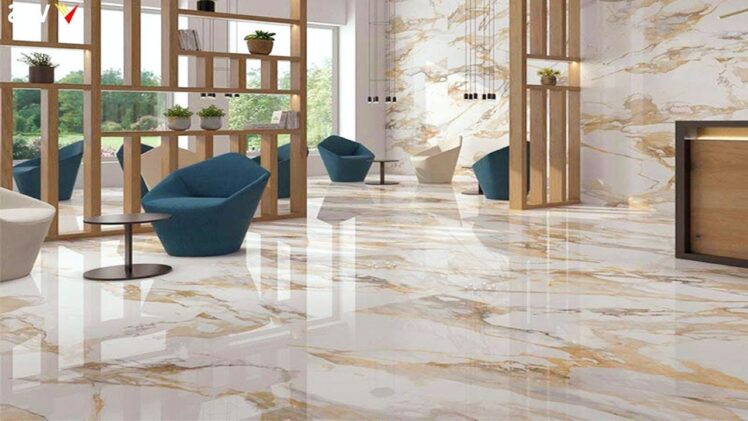
Floor vitrified tiles are one of the most versatile, safe, and sturdy solutions that can serve any space. Vitrified floor tiles offer several advantages over other flooring options like natural stone, hardwood, cement, and others.
Vitrified tiles not only offer an alternative but can also satisfy your craving for natural materials like Italian marble, granite, or slate stone floors. After installation, modern wooden vitrified tiles are surprisingly difficult to differentiate from the grainy hardwood flooring.
Multiple Types of Vitrified Floor Tiles for Every Application
Vitrified tiles have been customized into different versions to suit different flooring needs. Whether installing tiles in your living room or a public parking space, you can choose a vitrified tile suitable for the application area.
Vitrified tiles primarily have the following three versions:
- Full Body Vitrified Tiles: These tiles feature a uniform body. Any texture, colour or pattern of these tiles permeates throughout the body. These tiles mimic natural stones in the true sense, as they can be polished and carved without affecting their texture. FBVTs are a good choice for floors and surfaces bearing harsh usage, such as outdoors, kitchen counters, etc.
- Glazed Vitrified Tiles: These are full-body vitrified tiles with a layer of hard glaze on top. The glazed surface can be printed digitally with intricate designs and patterns. These tiles also feature several different types of surface finish options adding to the aesthetics and safety of the space. These tiles are recommended for areas where beautification is a goal along with safety.
Premium glazed vitrified tiles are a great choice for the low footfall home environment. However, industrial glazed vitrified tiles can serve in tougher places such as public parking, workshops, and industrial floors.
Wooden vitrified tiles are a popular choice among homeowners for floor tiling. These tiles perfectly replicate the hardwood flooring planks of various types of wood. But, unlike natural wood, wooden vitrified tiles are virtually maintenance-free.
- Double-Charged Vitrified Tiles: Double-charged vitrified tiles feature a thick layer of colour pigment on top. This 3-4 mm thick layer of the top coloured feature ensures that the tile’s surface hides minor scratches and bears more footfall without wear.
DCVTs are recommended for high footfall floors like retail stores and malls. However, these tiles suffer from fewer design variations, since they use only a few colour pigments, infused directly on the tile. The colour fusion method does not control the patterns drawn on the tiles.
1. High Durability
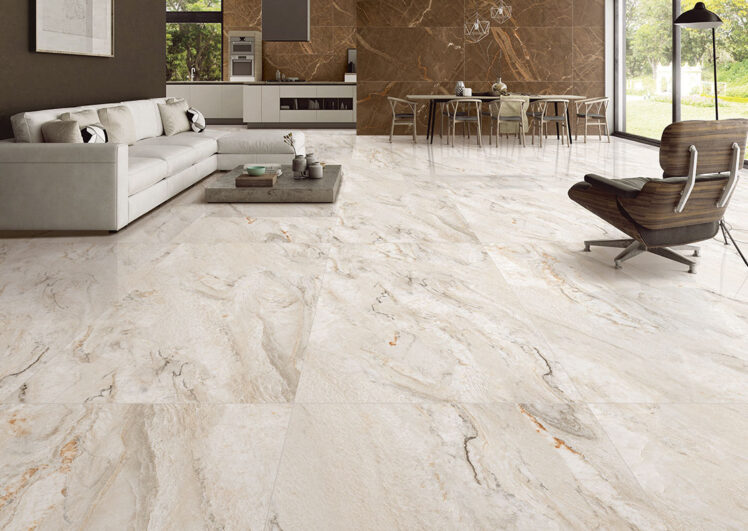
Source: sunhearrt.com
Vitrified tiles have a higher mechanical strength and surface hardness than non-vitrified tiles and several other flooring options. That means vitrified tiles can bear a higher load without breaking and do not wear easily. These traits give these tiles a long repair-free life when used and installed appropriately.
Make sure to choose vitrified floor tiles with adequate surface durability and strength based on the type and magnitude of footfall or traffic.
2. Multiple Surface Finish
Vitrified tiles are available in multiple surface finishes ranging from premium-looking high gloss surfaces to high skid-resistant matt finishes. Here are the most popular surface finishes for vitrified floor tiles you can use at home:
- High Gloss
- Gloss or Polished
- Carving
- Rocker Matte
- Satin Matte
- Wood Matte
- Rustic
- Matte Finish
Use the more rugged finish when you need anti-slip qualities on the floor such as in the kitchen, bathrooms, and balconies.
3. Similar to Natural Stones
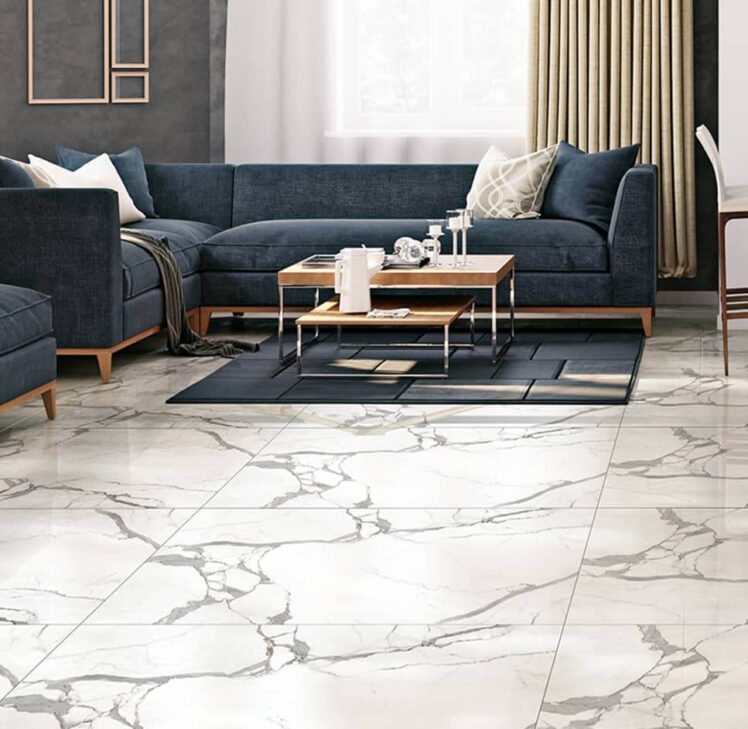
Source: somanyceramics.com
Vitrified tile designs can mimic various natural stones like marble, granite, slate stone, limestone, etc. You can find patterns and designs for the rarest of the rare pink and black marble under glazed vitrified tile designs. Not only that, but you can find patterns not naturally available.
Tile leaders like H&R Johnson in India, offer randomization features with premium vitrified floor tiles to complete the natural stone flooring. With their strong composition and natural stone patterns vitrified tiles can perfectly mimic most natural stone flooring options.
4. Thermal & Noise Insulation
Vitrified tiles not only mimic the appearance of natural stones and wood, but they also imbibe certain qualities from them. Heat resistance and noise cancellation are two properties available for free with vitrified tiles.
So, you can consider using vitrified tiles not only on the floor but also on the walls.
5. Stain-Free
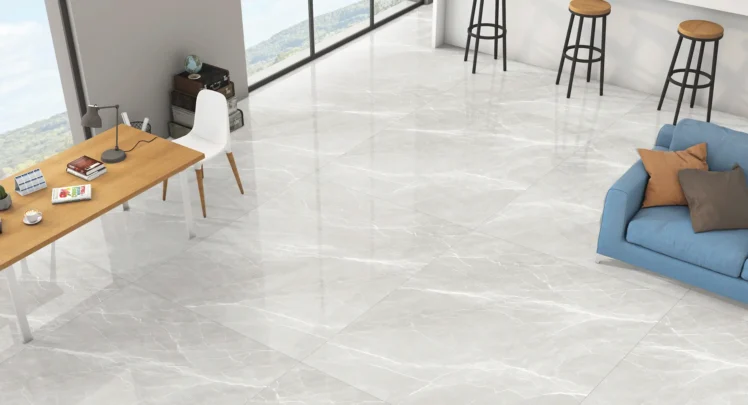
Source: feaceramics.com
Vitrified tiles have a very low water absorption at less than 0.05% which makes these tiles almost impervious to absorbing any liquid that spills over them. Glazing reduces the absorption levels even further, making them stain-free.
Stain-free properties allow the tiles to be cleaned easily using a water and soap mixture and a wipe.
6. Innumerable Design Options
Modern high-definition (HD) digital printing allows tile manufacturers to create a huge number of design variations on the tiles. The largest tile manufacturers feature almost 3000 designs under their vitrified floor tiles catalogues at a time.
So, if you are looking for something unique or looking for something that pleases a large number of your guests, you can be sure to find a vitrified tile for that.
7. Nominal Maintenance
The impervious strong body of vitrified tiles ensures minimal wear and a long lifespan of the tiles with nominal maintenance. You only need to clear the tiles of any dust accumulations and stains regularly. Normal daily sweeping and wiping with soapy water can achieve the regular maintenance needs of vitrified floor tiles.
8. Easy Installation
Tiles are pre-cut for the purpose. So, if you select the correct tile sizes, installation will be much easier. For example, if you need to provide a slope on the floor use smaller tiles. Select the size of the tile based on the floor or wall area for minimal cutting and shaping.
Staircase tiles have groove lines and anti-skid treads and have matching raisers to complete the installation, i.e., no cutting, shaping, or grooving is required on sight.
9. Eco-Friendly / Recyclable
Vitrified tiles are made of earthly materials like clay, silica, and feldspar. If broken or at the end of their life cycle the tiles can be recycled. Most leading brands, including H&R Johnson, give impetus to recycling discarded tiles and using eco-friendly methods of sourcing materials and manufacturing.
10. Devoid of Polluting Elements
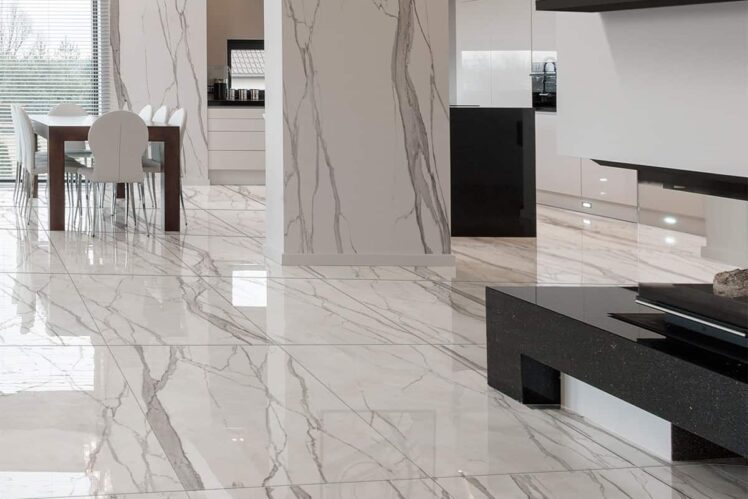
Source: aradbranding.com
Vitrified tiles are manufactured using stable elements which do not release toxins into the environment after installation. Since the vitrified tile’s structure is akin to natural stones, you do not need to worry about tiles getting infected with destructive insects and fungi. Thus, you do not need to use disinfectants and polish on the tiles which can pollute the air inside your home.
Also, since vitrified floor tiles do not hold or gather dust they are safe for people prone to allergies or respiratory issues.
Vitrified Floor Tiles Cost & How To Buy?
Vitrified floor tiles can cost anywhere between Rs 50 to Rs 150 per square foot. The best way to buy vitrified tiles is to explore online through the manufacturers’ websites. You can find vitrified floor tiles catalogues and glance through the recommended usage and technical details before selecting a few designs and sizes.
Finally, pay a visit to your nearest experience centre or dealership of the tile brand. You can also connect with a tiling expert at one of the leading tile brands providing the service, and select the appropriate tile designs and sizes.

